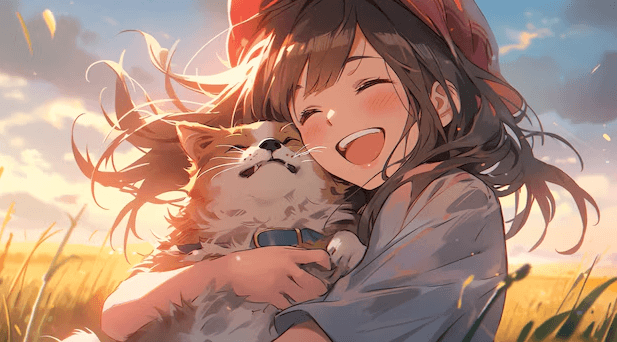Kawaii:Lrajta9-Z0o= Anime:0rexbt1uulg= Cute

Kawaii:Lrajta9-Z0o= Anime:0rexbt1uulg= Cute, with its roots in post-war Japan, represents a fascinating intersection of innocence and aesthetic charm that is profoundly reflected in anime. The intentional design choices, characterized by exaggerated features and playful elements, foster a unique emotional connection between characters and audiences. This phenomenon not only shapes narratives but also extends its influence into global merchandise and fashion, prompting discussions about self-identity and expression. As kawaii continues to evolve, one must consider how its principles will adapt to emerging trends and cultural narratives, raising intriguing questions about its future impact.
The Origins of Kawaii Culture
The origins of kawaii culture can be traced back to post-war Japan, a period marked by significant societal transformation and the emergence of new aesthetic preferences.
Historical influences, such as the rise of consumerism and Westernization, facilitated the creation of kawaii characters, which epitomized innocence and playfulness.
This cultural shift not only reflected societal desires for freedom but also reshaped Japan’s visual culture, captivating global audiences.
Kawaii Aesthetics in Anime
Kawaii aesthetics in anime serve as a visual language that encapsulates both charm and emotional resonance, drawing viewers into a world characterized by cuteness and whimsy.
Through the use of kawaii characters, creators employ visual storytelling techniques that evoke empathy and connection.
This aesthetic not only enriches narrative depth but also invites audiences to explore themes of innocence, joy, and emotional vulnerability.
Influence on Merchandise and Fashion
In recent years, the kawaii aesthetic has permeated various aspects of merchandise and fashion, shaping trends and consumer preferences across global markets.
Kawaii characters have become essential icons in fashion collaborations, fueling demand for playful, whimsical designs.
Brands increasingly leverage this aesthetic to attract diverse audiences, creating unique products that resonate with consumers’ desire for self-expression and individuality in their fashion choices.
Read Also Horse Food: Global Pet Food Market by Region
Global Impact and Future Trends
As the kawaii aesthetic continues to influence merchandise and fashion, its global impact becomes increasingly evident across various cultural landscapes.
Kawaii globalization fosters cultural exchange, allowing diverse societies to embrace and reinterpret these playful motifs.
This trend not only shapes consumer behavior but also promotes inclusivity, leading to innovative collaborations that reflect a blend of traditional and contemporary styles, thus ensuring its enduring relevance.
Conclusion
Kawaii:Lrajta9-Z0o= Anime:0rexbt1uulg= Cute, with its roots in post-war Japan, remains a dynamic force in contemporary society, influencing anime aesthetics and global fashion trends. Despite potential critiques regarding its perceived superficiality, the underlying themes of joy and vulnerability foster deeper emotional connections among audiences. This multifaceted phenomenon not only encourages self-expression but also facilitates cross-cultural exchange. As kawaii continues to evolve, its relevance in both cultural and commercial spheres affirms its significance in the modern world.

